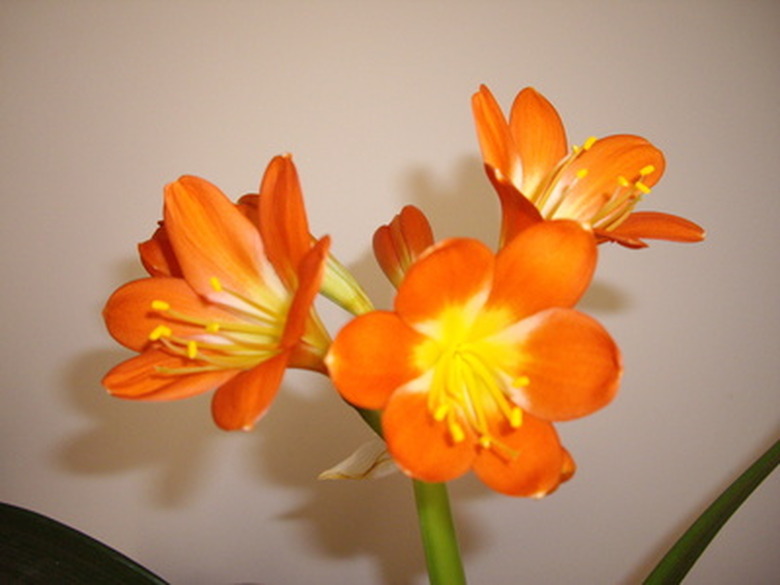How To Transplant Clivia
Things Needed
- Heavy container
- African violet potting soil
- Garden trowel
The clivia is an unusual member of the Amaryllis family. Unlike it's cousins in the family, clivia has no bulbs or rhizomes. Instead, it grows from a number of rope-like roots. The plant is prized to the point that a single specimen may sell for thousands of dollars. Clivia may be used as an outdoor plant in warm, coastal areas with sandy soils, such as are found in southern Florida. In most parts of the country, clivia is grown in containers. Transplanting clivia should be done with the greatest of care to avoid damaging the valuable plant.
- The clivia is an unusual member of the Amaryllis family.
- In most parts of the country, clivia is grown in containers.
Step 1
Time the transplant for spring after the flowers have faded and a new growth cycle has begun.
Step 2
Select a heavy container that is only 1 or 2 inches wider than the current container.
Step 3
Plant the clivia in a nutrient-rich, well-drained soil such as a commercial potting soil formulated for African violets.
Step 4
Remove the clivia from its current container by turning the container on its side. Support the clivia with one hand and gently tap the container until the root ball and soil pull free.
Step 5
Place a pottery shard over the drainage hole of the new container. Fill the container one-third of the way with new soil. Place the plant's root ball in the container. Fill in the sides around the container with new soil.
- Time the transplant for spring after the flowers have faded and a new growth cycle has begun.
- Remove the clivia from its current container by turning the container on its side.
Step 6
Water the plant until the soil is slightly damp. The soil should feel as damp as a wrung-out sponge.
Step 7
Place the clivia container in bright, indirect sunlight.
Tip
The best way to propagate clivia is by dividing the plant at the roots. Wait until the baby plant that offsets the parent plant is at least 2 years old. Gently tease the roots apart, or cut them apart with a sharp knife where the offset plant meets the parent plant, creating two plants. Since clivia puts out flowers on a stalk, it tends to be a top-heavy plant. A heavy container will help the plant to stay upright.
Warning
Clivias dislike having their roots disturbed. In containers, the plants thrive when they are root bound. If you must transplant the Clivia, do so only every three to five years.
